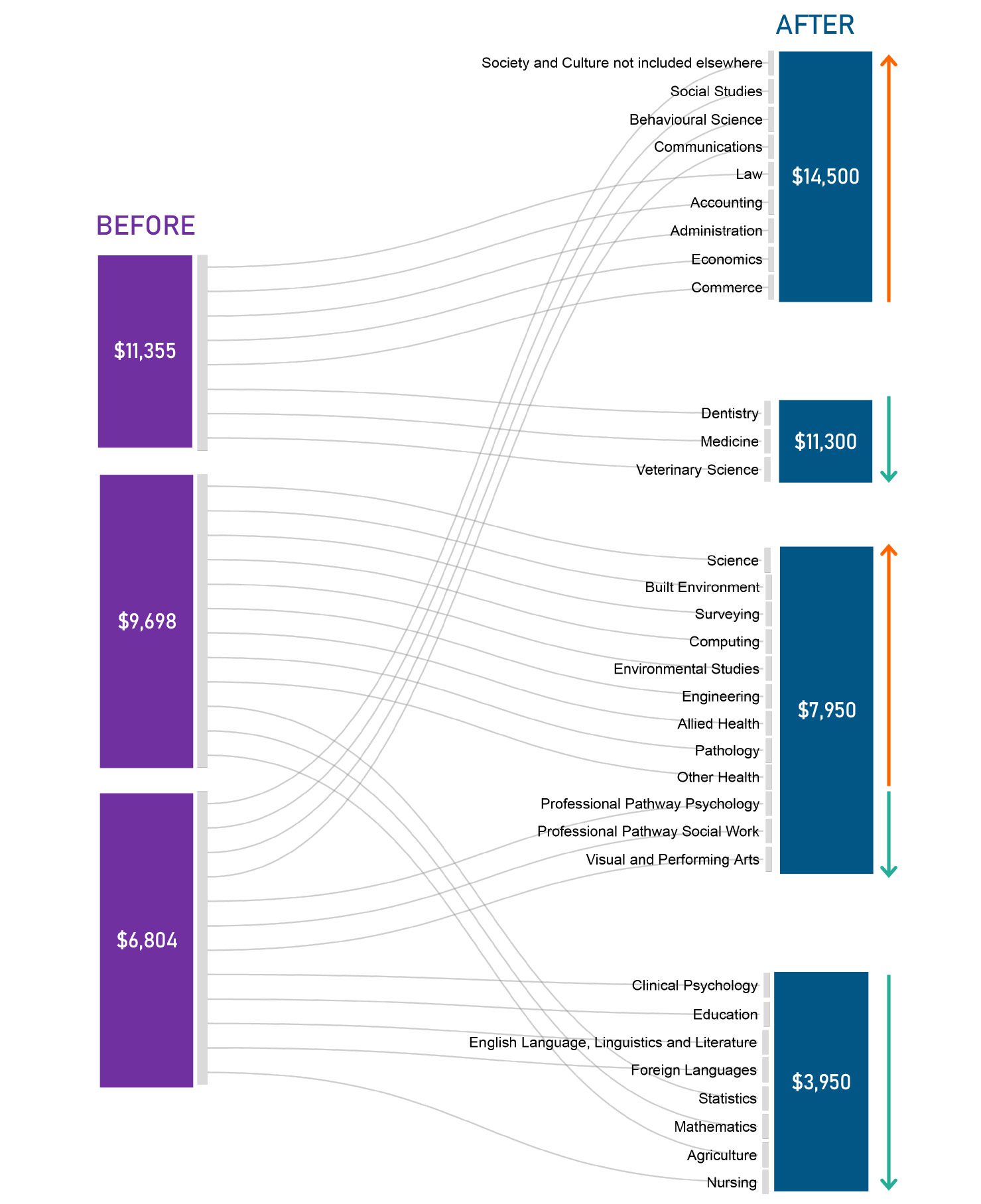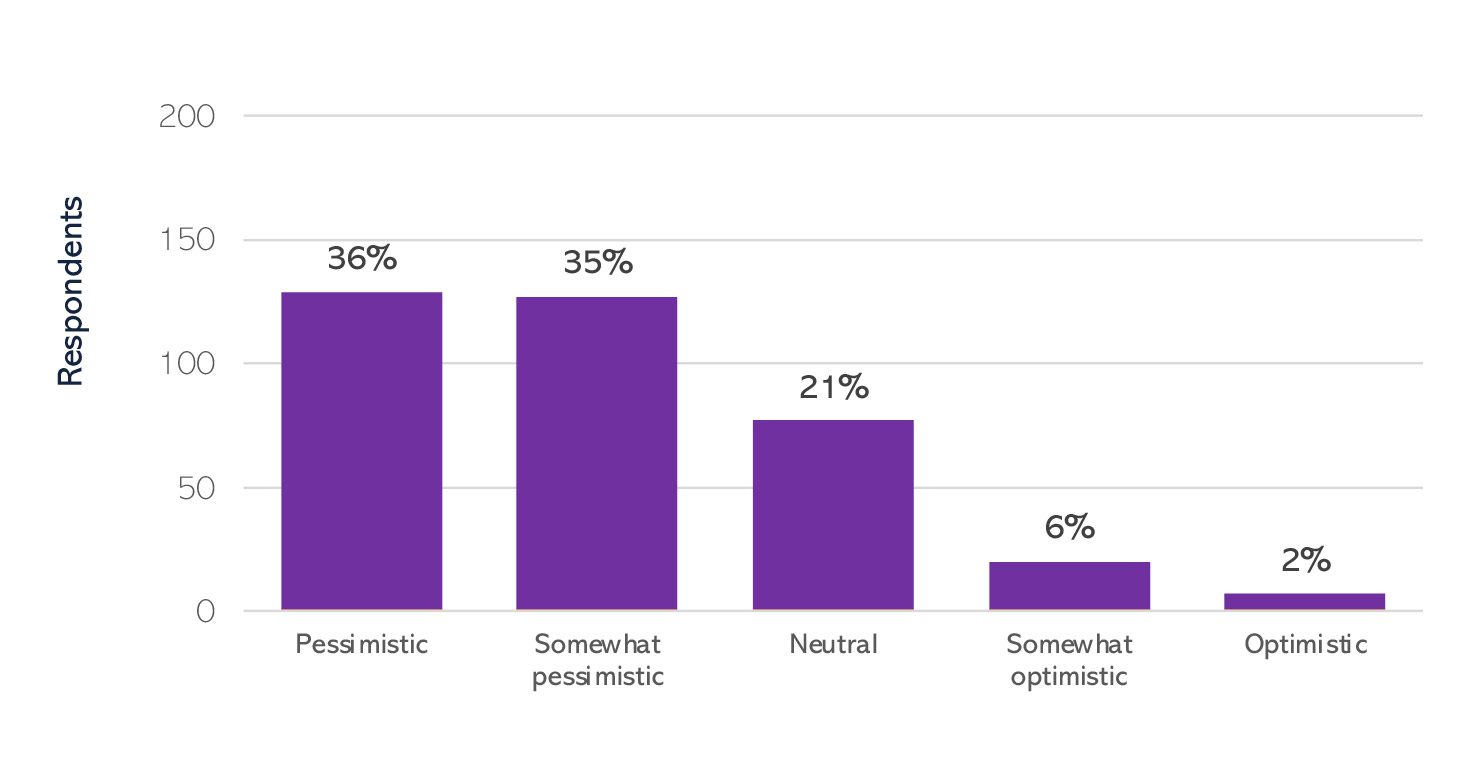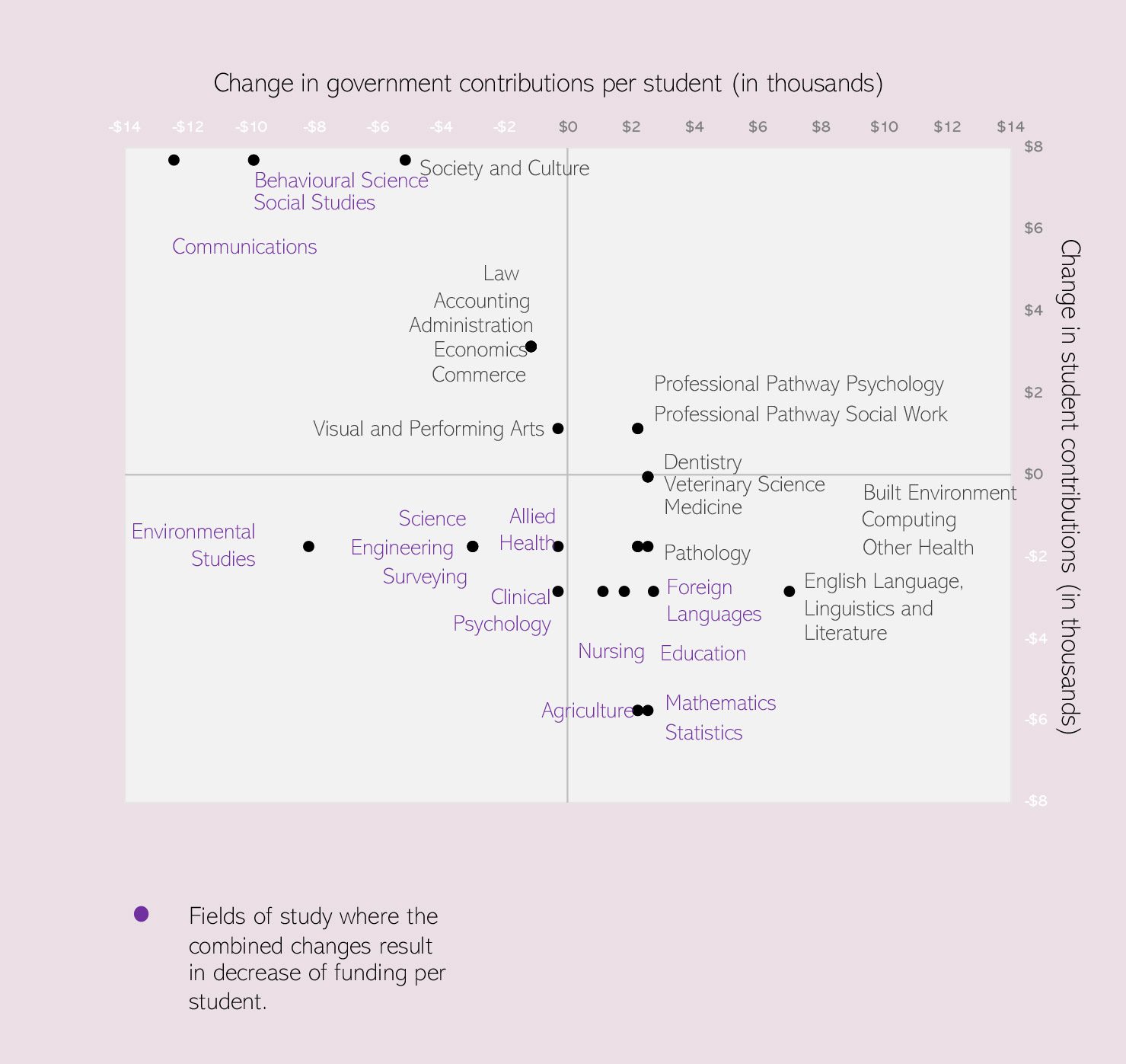The JRG aftermath
The Job-Ready Graduates Package (2020) makes the biggest changes to higher education funding policy since the introduction of uncapped (demand-driven) places between 2010 and 2017. It’s impact could be just as significant.
When the Job-Ready Graduates Package was first introduced in August 2020, changes to student fees made the headlines. Some social science programs that previously had the lowest student fees were suddenly more expensive than medicine (Figure 16); others saw modest increases and others still reductions.
Early in 2021, we asked social science academics about their views on the potential impacts of the package for the social sciences. The majority of respondents (71%) felt pessimistic about its effects (Figure 17, overleaf); in particular the narrative around job-readiness. However, only a small proportion of respondents are worried specifically about a decline in student demand or the closure of programs. This section presents what stakeholders are thinking, beyond the headlines.
Funding shifts
- The package introduced changes to the student fees, but also to the amount of subsidy paid by the government for each student (Figure 18, overleaf). The combined effect of these changes means universities will get more funding per social science student than they used to in 9 out of 12 social science programs.
- Meanwhile, programs such as science, engineering or environmental studies will receive between $4.7K to $9.9K less per student each year. How will universities adjust to the new reality?
- The package also included a new National Priorities and Industry Linkage Fund (NPILF) to support increased engagement between universities and industry. Despite its primary focus on STEMM, stakeholders noted there should be opportunities for social science researchers to access and leverage this fund.
Impacts on quality
- Poorly managed, the new emphasis on employability could result in a ‘dumbing down’ of social science program curricula, for example, if the teaching of generic job skills displaces core discipline skills.
- Alternatively, higher fees could lead social science students to demand top quality programs, and universities to make greater efforts to recruit them. Well managed, the new, more competitive environment could see the quality of social science programs increase radically over the coming years.
Impacts on equity
- While commentators (e.g., Norton 2020) doubt the legislation will succeed in influencing student choices, some stakeholders fear lower socio-economic students might be sensitive to the fee hikes. Over time, higher-fee social science programs could see a decline in student diversity –become ‘elite’.
- The shifts to tuition fees also mean students from other areas (e.g., studying towards degrees in Health, Humanities, or STEM) are likely to be discouraged from enrolling in elective courses in the top-paying fields, such as social studies, behavioural science (impacting multidisciplinarity). At the same time, it opens opportunities for social science students to take up coursework in reduced-fee areas.
- Smaller social science faculties (e.g., regional) are more sensitive to student losses. If demand falls, Australia could see social sciences programs restricted to larger universities (e.g., G8).
Students’ perspective: old vs new contributions, by field
Students contributions by field, before and after the introduction of the Job-Ready Graduate Package, based on Parliament of Australia 2021

“We note that applications to study ‘society and culture’ are remaining strong and even outstripping other areas. […] This actually shows enormous adaptability and creativity by academics.”
Head of School at an Australian school of social science
Higher education stakeholders’ sentiment in relation to the JRG Package
From stakeholder consultation (online survey) by the Academy

University perspective
Combined effect of legislation changes to student and government contributions, based on Parliament of Australia 2021

